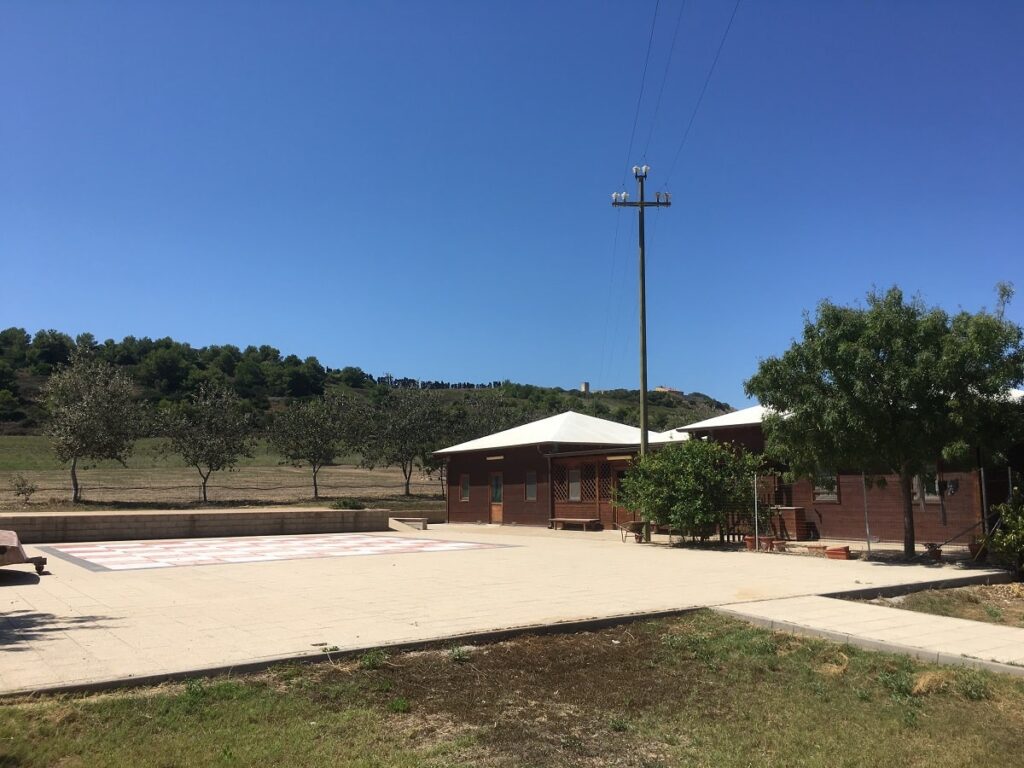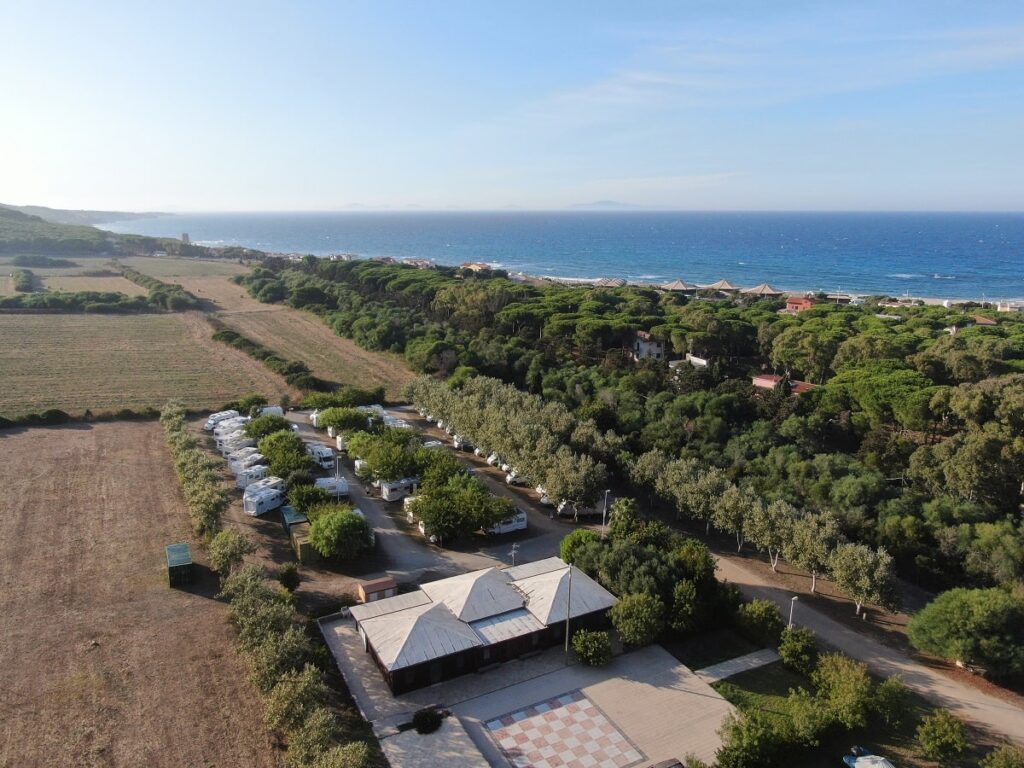Campsite International is located right at the center of the Gulf of the Asinara, and its perfect position allows easy access to the whole of North of Sardinia by covering only short distances to reach the most beautiful beaches, holiday resorts and archeological sites; which also makes it easy to find your way back to the Camp at dusk or in the night and rest assured to find each visitor their own parking space – as well as access to all the services of the Camp.
The distance from Porto Torres is only about 4 km, and visitors arriving on the island by ship from Genoa, Marseille, Toulouse, Barcelona and Corsica can easily and quickly find the best possible place to stay for Campers and Caravans in just a few minutes.
The Camp is located at the 13 km of the provincial route 81, and it stands only 250 meters away from the beach of Platamona, which extends well beyond 14 km along the coastline from the white rocks of Porto Torres down to the red rocky trachites’ toward Castelsardo.
All along, the water’s edge is quite shallow and it’s great for both children and/or unskilled swimmers.


The beach is the longest of the island, and behind it there’s an old natural pine-wood strip of land which extends almost as far toward the east as the beach does.
A sweet-water pond lay inside the pine-wood, only a few meters from the Camp Site, and it hosts numerous species and colonies of birds; thus, visitors are immediately placed in contact with nature and you needn’t walking too far to enjoy beautiful panoramas and sights.
We are in fact only 15 km away from Sassari, 25 from Castelsardo, 35 km from Stintino and 40 from Alghero.
Thus one may soon realize what makes the Island all the more attractive, that is: the variety of landscapes and panoramas, which is a constant source of never ending surprise for tourists and visitors.
In fact, the north-west of Sardinia alone comprises of quite a number of different rocky landscape types, from the Gallura’s hard red granite to the white crumbly limestone of the coastline from Platamona to Porto Torres; from Stintino’s sharp gray shale down to all the grottos and caves below the Alghero area, many of which are yet to be explored.In the lowest coastal areas and inlets, the sea has given shape in time to beaches which have truly little to envy when compared to more exotic places.
What can you say then about the weather!?…The Màrghine’s mountain chain, which crosses the island and cuts through from east to west, is a natural barrier which protects the north of Sardinia from the hot winds coming from Africa, and the hottest days of July and August are often 2 or 3 degrees milder than in the south, making temperatures more bearable – also thanks to a pleasant north-westerly breeze.


